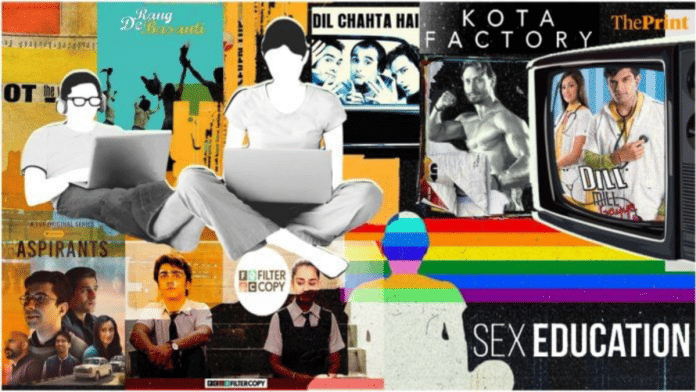Thank you dear subscribers, we are overwhelmed with your response.
Your Turn is a unique section from ThePrint featuring points of view from its subscribers. If you are a subscriber, have a point of view, please send it to us. If not, do subscribe here: https://theprint.in/subscribe/
From the catchy tunes dominating your streaming playlists to the viral trends sweeping through your social feeds, popular culture is more than just entertainment – it’s a pervasive, powerful force that profoundly shapes our lives. Far from being a mere distraction, pop culture acts as both a mirror reflecting our collective attitudes and a potent catalyst that actively molds our values, identities, and even our purchasing habits. To understand the dynamics of contemporary society, we must first understand the ever-evolving landscape of pop culture.
So, what exactly is “pop culture?” Simply put, it’s the shared practices, beliefs, and objects that are widely accepted and dominant within a society at a given time. Unlike the exclusive realms of classical art or traditional folk customs, pop culture is mass-produced and accessible, designed for the enjoyment and consumption of the majority. Its very existence is tied to historical shifts, notably the Industrial Revolution, which created a burgeoning middle class with both leisure time and disposable income to engage with new forms of mass entertainment. From early serialized novels to the vibrant jazz age, pop culture has always been about the “culture of the people.”
The journey of pop culture is a testament to technological innovation. The early 20th century saw the rise of cinema and the phonograph, creating shared national experiences. Radio then connected communities across vast distances, broadcasting music and dramas directly into homes. Post-World War II, television became the ultimate game-changer, bringing entertainment into every living room and propelling figures like Elvis Presley into superstardom as youth culture began to assert its influence. The 1960s cemented this with The Beatles’ “British Invasion,” a watershed moment that reshaped music and youth identity globally.
The late 20th century brought another seismic shift with the launch of MTV in 1981. Music videos became an art form, catapulting icons like Michael Jackson and Madonna into unparalleled global fame. Hip-hop, born in the Bronx, started its journey from underground movement to a dominant global force.
However, no era has seen a transformation as rapid and profound as the 21st century, dominated by the internet and social media. Platforms like YouTube, Instagram, and TikTok have completely rewritten the rules. Influence is no longer solely top-down; it’s decentralized. Viral trends can emerge organically from everyday users, spreading globally in a matter of hours. Streaming services like Netflix have reshaped how we consume media, popularizing “binge-watching” and opening doors for international content to reach massive audiences. Looking ahead to 2025, we continue to see digital trends intensify, with growing focus on sustainability in fashion and cultural debates sparked by genre-bending music, proving that pop culture remains a dynamic, fast-moving target.
But pop culture’s impact extends far beyond our playlists and watchlists. It’s a powerful agent in four critical aspects of our social world:
One, it shapes our worldview. Pop culture serves as a vast narrative canvas, capable of both reinforcing and challenging societal norms. Increased representation of diverse communities, such as the LGBTQ+ community in television and film, has played a significant role in shifting public perceptions and fostering greater acceptance. Conversely, the media can also perpetuate harmful stereotypes related to race or gender, subtly influencing our beliefs and biases. It normalizes what we see and hear.
Two, it forges our identities. For many, especially adolescents, pop culture is a vital toolkit for self-discovery. Music, fashion, and fandoms centered around beloved TV shows or video games provide avenues for self-expression and community building. In our hyper-connected world, social media platforms have become primary arenas for this identity work. Young people find like-minded individuals, experiment with self-presentation, and cultivate a sense of belonging. While empowering, this constant curation and comparison can also lead to increased pressure and negative impacts on self-esteem.
Three, pop culture also drives the marketplace: The link between pop culture and consumerism is undeniable. Our purchasing decisions, from the clothes we wear to the tech gadgets we crave, are heavily influenced by what is deemed popular. Brands leverage product placement, celebrity endorsements, and the formidable power of “influencer marketing.” With a staggering number of consumers seeking guidance from social media influencers before making a purchase, pop culture not only reflects consumer desires but actively creates them.
And ultimately, it fosters global interconnectedness. Fueled by technology, pop culture has become a primary driver of globalization. The global success of Hollywood films, the worldwide phenomenon of K-pop, and viral TikTok dances demonstrate pop culture’s unique ability to create shared experiences that transcend national borders. This process facilitates vibrant cultural exchange, leading to exciting hybridized forms of music, food, and fashion. However, it also raises critical concerns about “cultural imperialism,” where the dominance of certain cultural outputs might dilute or marginalize unique local traditions, posing a challenge to global cultural diversity.
Therefore, pop culture is far more than a collection of popular songs and blockbuster films; it is the dynamic, ever-shifting landscape where modern society defines its values, shapes its identities, and builds its connections. It has evolved from a national phenomenon into a global, participatory conversation, constantly challenging and reflecting our world. To truly navigate the complexities of the 21st century, we must engage critically with the popular culture we consume, recognizing it not as a passive diversion, but as a central arena where the future of our society is actively being written.
These pieces are being published as they have been received – they have not been edited/fact-checked by ThePrint.


